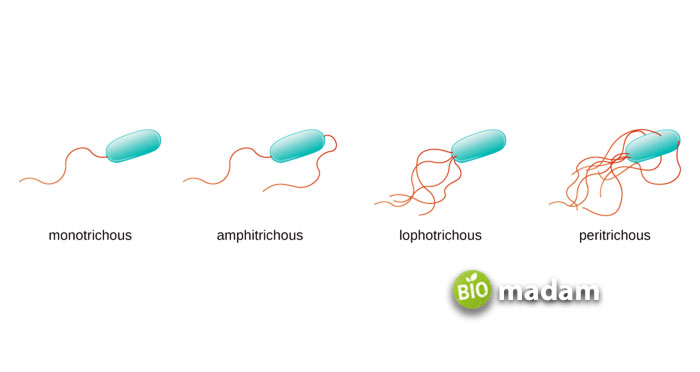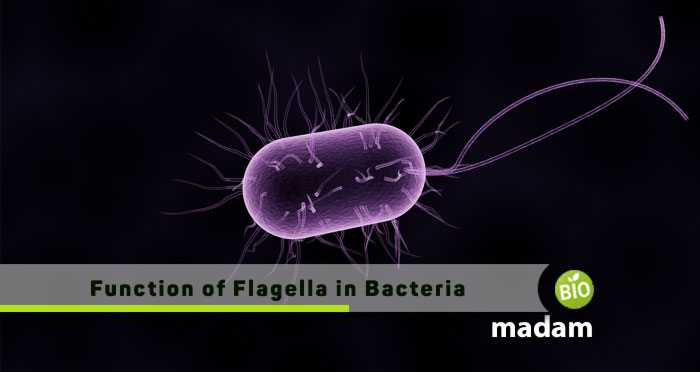Like humans use feet for movement, and cats use their paws, microscopic organisms have specific structures that help them relocate from one place to another. Among these are the different types of bacteria that utilize flagella for movement and amoeba that move with their whole bodies. While both are involved in motility, they are quite different in structure. Let’s discuss how flagella play a crucial role in bacteria, but before that, understand the terminology.
What is Flagella?
The word Flagella is the plural of flagellum which means “whip”. It is a hair-like microscopic structure on the body of the bacteria that help in the movement of the cell. They are typically used to propel through liquids.
Structure of Bacterial Flagellum
Typically, a bacterial flagellum is composed of three basic structures;
Basal Body: The basal body is attached to the plasma membrane and cell membrane and consists of four rings enveloped by proteins known as MotB. The four rings present in the basal body are L-ring, P-ring, C-ring, and M-S ring. They are anchored in different layers in the cell membrane and cytoplasm of bacteria to perform specific functions in the prokaryotic organism.
Hook: The hook is a wider area at the base of the filament that connects the filament to the base proteins. It is usually lengthier in gram +ve bacteria than a gram –ve bacteria.
Filament: The third basic flagellum structure is the filament. It is the most obvious part that looks like a hairy structure rising from the hook.
Types of Bacterial Flagellum
Flagella are typically classified based on their location in the bacteria’s body. There are of four types:
Monotrichous: This kind of flagellum is present at any one end of the bacteria.
Locotrichous: Multiple flagella at any one end of the bacteria are called locotrichous.
Amphitrichous: Single flagella at each end of the prokaryotic organism are Amphitrichous flagella.
Peritrichous: Peritrichous flagella are present in clusters all over the bacteria’s body.
Movement Mechanism

The mechanism of action of all three types of flagellum in bacteria, i.e., monotrichous, lophotrichous, and amphitrichous, are similar. They are known as polar flagellum, whereas the other, peritrichous flagellum, is non-polar. The polar flagellum moves forward by rotating clockwise and counterclockwise. Clockwise movement helps the bacterial body move forward, while anti-clockwise movement pulls them backward. Some organisms cannot change direction independently and depend on the Brownian movement and liquid flow to move forward.
Functions of Flagellum in Bacteria
Though the function of the flagellum in bacteria has been discussed above, let us put its overall functions briefly for you.
- They help bacteria move from one place to another through propelling movement.
- They provide sensory information about changes in pH and temperature in the environment.
- Some algae like Chlamydomonas use their flagellum as secretory organelles.
- Apart from bacteria, a few eukaryotes use flagellum to enhance reproduction rates.
The Bottom Line
Cilia and flagella are both locomotory organelles that help bacteria and other such organisms like archaea move from one place to another. They also act as sensory organs to inform about temperature and pH changes besides movement. All three kinds of polar flagella move by the clockwise or counterclockwise movement, allowing the bacteria to move forward or backward. They also act as secretory organelles in a few algae and increase reproduction rates in eukaryotes.

Anna has completed her degree in Pharmacy from the University of Hawaii. She is serving as a research assistant in a pharmaceutical company. She had a great interest in writing blogs, traveling to different parts of the US, and trying delicious recipes in her spare time.

